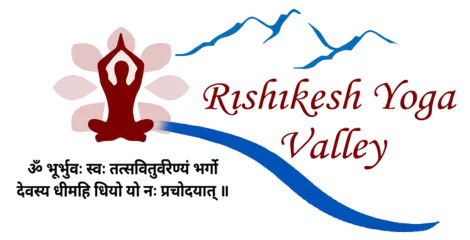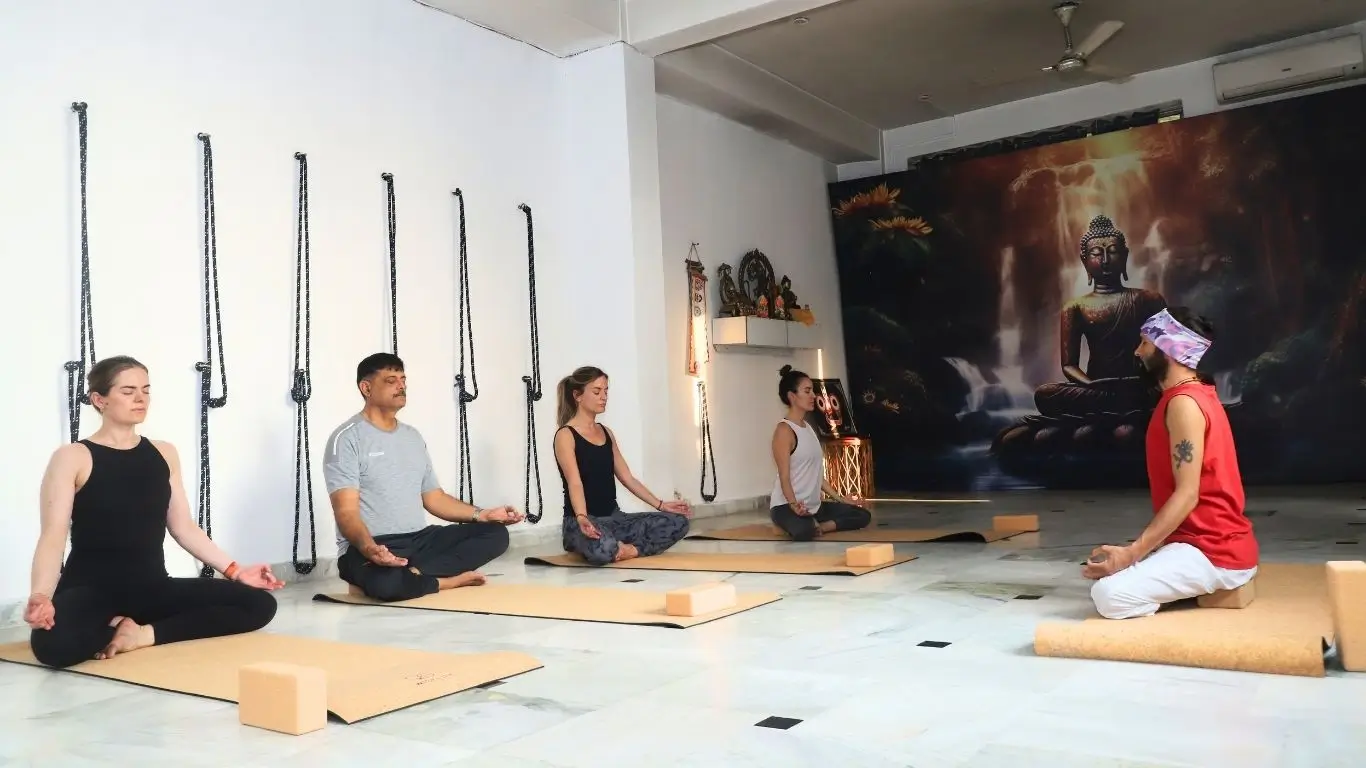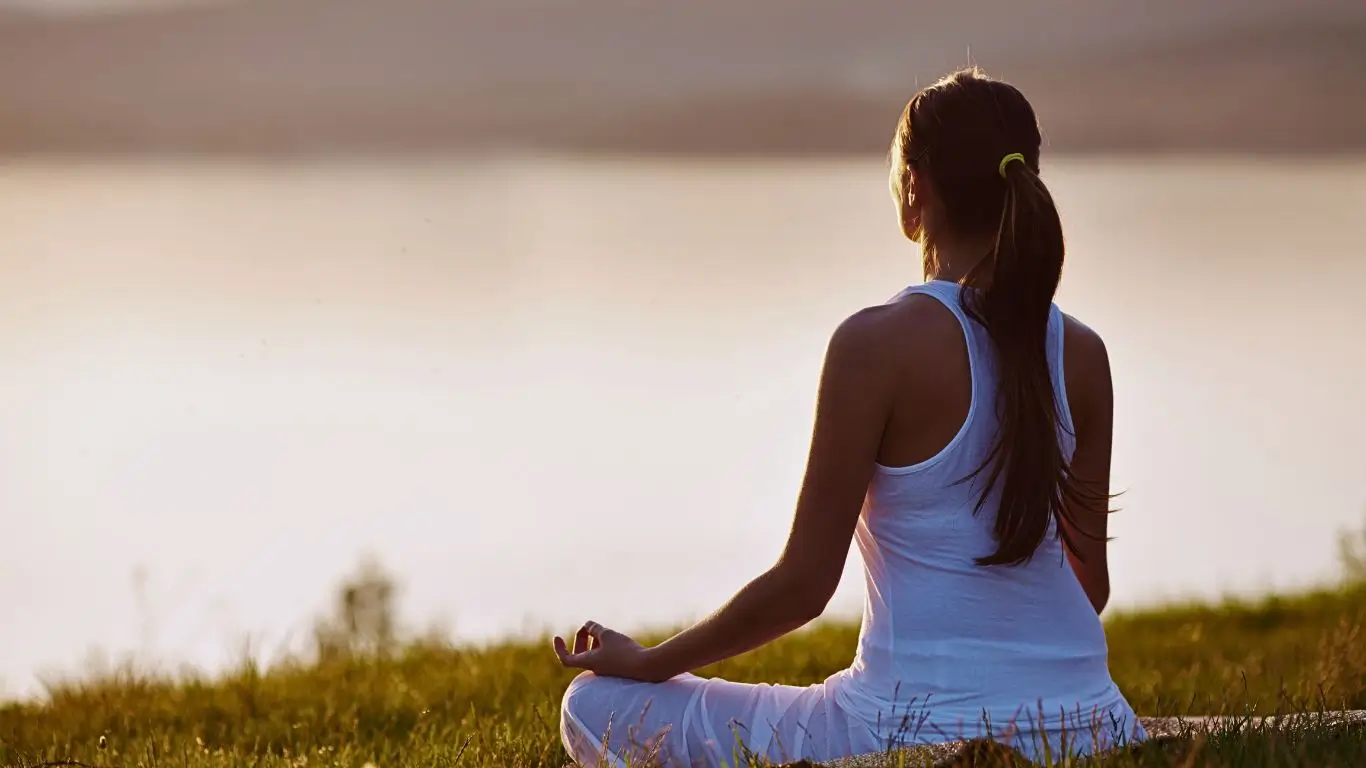Types of Yoga Teacher Training Courses in Rishikesh (2025 Updated)

Rishikesh is where many of us fell in love with yoga. I wrote this guide to give you a simple, honest, step‑by‑step breakdown of every major yoga teacher training course (YTT) type you’ll find across Rishikesh – so you can choose with clarity. It’s fully updated for 2025 and shaped by questions we answer every week for students.
Quick Decision Making for YTTCs
- 100‑hour YTT = A bite‑size foundation or module toward a larger certification. Great if you’re testing the waters or short on time. Not a standalone RYT credential.
- 200‑hour YTT (RYT‑200 pathway) = The global entry‑level standard to teach; covers techniques, anatomy, yoga humanities/philosophy, and professional essentials.
- 300‑hour YTT (advanced) = Deepens and refines skills after a 200‑hour; adds advanced teaching, assists, sequencing, and specialty topics.
- 500‑hour YTT = Integrated or stacked (200+300) master path; graduates often lead classes, workshops, or manage studios.
- At Rishikesh Yoga Valley: Affordable pricing, course starts at India residents ₹18,000 & International $299 / €255 — with small groups and ancient real‑world teaching practice.
Types of yoga teacher training courses in Rishikesh
100 Hour Yoga Teacher Training in Rishikesh
Best for: Busy travelers, early‑stage practitioners, upskillers, and anyone wanting a taste of teacher training without committing to a full month.
Outcome: A certificate of completion for 100 hours. It doesn’t by itself qualify you for the widely recognized teaching registration paths; most students later add another 100 hours (or jump into a 200‑hour) to reach a complete foundational qualification.
What you’ll learn:
Essential asanas (alignment, foundations, safety)
Pranayama basics (breath mechanics, breath ratios)
Meditation techniques (focus, relaxation, mantra)
Intro to anatomy & biomechanics relevant to yoga
Core philosophy (Yoga Sutra ideas, eight limbs in daily life)
Micro‑modules on sequencing & cueing
Who thrives in a 100‑hour:
You want a short, immersive reset.
You plan to stack hours toward 200.
You’re returning to the mat and want a confidence reboot.
Typical duration: 10–14 days.
Daily rhythm (example):
06:30 – 08:30 Asana & pranayama
09:30 – 10:30 Anatomy / alignment lab
11:30 – 12:30 Philosophy & self‑study
16:00 – 17:30 Workshop: sequencing / assists
18:00 – 18:30 Meditation or kirtan
At Rishikesh Yoga Valley:
Small groups (8–10 students) so you get individual attention.
Private room options with mountain views.
Healthy satvik vegetarian meals.
Weekend treks & Ganga aarti visits.
Fees start: India ₹18,000; International $299 / €255.
Perfect next step: Add another 100 hours (often same style) to complete a 200‑hour foundation, or jump into our 200‑hour directly if your schedule allows.
200‑Hour Yoga Teacher Training (RYT‑200 pathway) in Rishikesh
Best for: Practitioners who want to teach beginners confidently and safely, or who want a deep, structured immersion.
Outcome: Graduates are prepared to teach open‑level classes responsibly. The syllabus covers four essential pillarsmost respected schools align with: Techniques & Training (asana, pranayama, meditation), Anatomy & Physiology, Yoga Humanities/Philosophy, and Professional Essentials (methodology, ethics, practicum).
What you’ll learn (high‑level):
Asana practice & labs: alignment maps, safe range of motion, intelligent sequencing.
Pranayama & subtle body: breathwork basics, ratios, energetics, bandhas.
Meditation & mantra: methods by lineage; daily sitting practice.
Anatomy & biomechanics: bones & joints, muscle actions, nervous system basics; injury awareness.
Yoga humanities & ethics: key texts (Yoga Sutras, Bhagavad Gita), yamas/niyamas, self‑inquiry, cultural context.
Professional essentials: cueing, assists, teaching practicums, feedback, lesson plans, basics of yoga professionalism.
Typical duration: 23–28 days (intensive) or 8–12 weeks (modular).
Daily rhythm (example):
06:30 – 08:30 Asana & pranayama
10:00 – 11:30 Anatomy / methodology
12:00 – 13:00 Philosophy / humanities
16:00 – 17:30 Teaching lab / practicum
18:00 – 18:30 Meditation
Assessment:
Micro‑teaches with feedback
Anatomy quiz & pose labs
Sequencing assignment
At Rishikesh Yoga Valley:
Small batches (8–10) with mentoring from Yogi Kamal Negi Ji and senior teachers.
Private room options, satvik meals, weekend treks.
Fees start: India ₹29,999; International $699 / €597.
300‑Hour Yoga Teacher Training (Advanced) in Rishikesh
Best for: Teachers who already hold a 200‑hour and want next‑level depth—subtle alignment, intelligent progressions, injury‑sensitive cueing, pranayama beyond basics, and leadership in the classroom.
Outcome: The 300‑hour builds on your 200‑hour foundation. Expect advanced techniques, refined teaching methodology, applied anatomy, deeper philosophy, and lots of practicum. Many grads step into senior roles at studios or start leading workshops.
What you’ll learn (sample scope):
Advanced asana analysis, prop‑smart assists, and regressions/progressions.
Sequencing for effects: strength, mobility, nervous‑system regulation.
Applied anatomy: gait, common dysfunctions, hypermobility awareness.
Pranayama & subtle body: ratios, kumbhaka, bandha integration, kriyas.
Teaching clinic: voice, timing, theming, hands‑on assists ethics.
Philosophy deep dive: Gita, Hatha Yoga Pradipika, applied ethics.
Professional track: workshops, retreats, basic operations & client care.
Typical duration: 28–35 days (intensive) or multi‑module over 2–4 months.
Assessment:
Long‑form class design & capstone teaching
Case studies on injuries or special populations
Peer & mentor reviews
At Rishikesh Yoga Valley:
Advanced labs led by senior faculty; mentored assists in real classes.
Fees start: India ₹45,000; International $899 / €768 per 25 day module (ask for integrated 200+300 savings if you’re stacking).
500‑Hour Yoga Teacher Training in Rishikesh
Best for: Serious practitioners and career‑minded teachers who want comprehensive mastery in one go—or who want to formally combine their 200 + 300 hours.
Outcome: 500‑hour graduates have strong command over asana, breath, meditation, teaching methodology, advanced anatomy, philosophy, and practicum. You’ll feel ready to lead multi‑level classes, beginner series, and themed workshops.
Two common pathways:
Integrated 500‑hour: One continuous track (~8–10 weeks+) combining foundational and advanced content.
Stacked 500‑hour: Complete 200‑hour, then 300‑hour later (even at different times).
At Rishikesh Yoga Valley:
We guide you on whether to go integrated (immersive) or stacked (flexible).
Fees start: Indian ₹74,999; International $1598 / €1365. Bundle options available when you plan both levels with us.
Step by step: Choose the right yoga course in Rishikesh
Step 1 — Clarify your purpose. Do you want to teach, deepen practice, or explore?
Step 2 — Pick your level.
- If you’re new to structured training → 200‑hour (or 100‑hour if time‑bound, then add more).
- If you already have a 200‑hour → 300‑hour.
- If you want full immersion → 500‑hour (integrated or stacked).
Step 3 — Choose your style focus. Hatha, Ashtanga‑Vinyasa, Alignment‑based (Iyengar‑inspired), Yin, or Multi‑style(our default).
Step 4 — Check the curriculum depth. Look for techniques + anatomy + humanities + methodology + practicum with real practice teaching.
Step 5 — Look for small groups & mentoring. Personalized feedback builds safe, confident teachers. Our groups are 8–10.
Step 6 — Confirm what’s included. Accommodation, private/shared room, satvik meals, treks, study materials, airport pickup options.
Step 7 — Budget clearly. Our Budget Friendly and Rishikesh’s Most Popular Course 200 Hour Yoga TTC in Rishikesh 2025 fees: ₹29,999 (India) and $699 / €612 (International). Budget for flights, visa, SIM, laundry, and snacks.
Step 8 — Plan your calendar. Intensive 4‑week blocks are common; 100‑hour modules are ~2 weeks.
Step 9 — Prepare your body & mind. Start a daily breath + mobility routine 4–6 weeks before arrival; reduce alcohol; hydrate.
Step 10 — Ask real questions. Who teaches anatomy? How many practice‑teach hours? How is feedback given? Can I tour rooms on arrival?
Styles & specializations you’ll see in Rishikesh
- Hatha (Classical): steady holds, breath‑led movement, foundations & alignment; great for beginners and teaching basics.
- Ashtanga‑Vinyasa: set sequences, breath‑movement synchronicity, discipline; builds strength & focus.
- Vinyasa / Flow: creative sequencing and transitions; excellent for class design skills when taught with alignment intelligence.
- Alignment‑based (Iyengar‑inspired): props, precise cues, injury‑sensitive progressions; great for teachers.
- Yin / Restorative: nervous‑system regulation, long holds, fascia hydration; complements yang styles.
- Meditation, Pranayama & Subtle Body: bandhas, ratios, meditation seats, mantra.
- Specialty add‑ons: prenatal fundamentals, trauma‑sensitivity basics, mobility drills, functional range concepts, sound or mantra.
At Rishikesh Yoga Valley we run a multi‑style(hatha, ashtanga-vinyasa, iyenger) core with clear alignment cues, pranayama, meditation and ayurveda sessions – so you graduate balanced and versatile.
Typical schedules, curriculum & assessments
Daily schedule (example for most levels):
- Dawn: Asana + Pranayama
- Mid‑morning: Anatomy/Methodology
- Noon: Philosophy/Humanities
- Late afternoon: Teaching Lab / Practicum
- Evening: Meditation/Kirtan or self‑study
Curriculum pillars you want to see:
- Techniques, Training & Practice — asana, breath, meditation; how to practice and how to teach.
- Anatomy & Physiology — bones/joints, muscle actions, nervous system, contraindications, basic biomechanics.
- Yoga Humanities (Philosophy, History, Ethics) — key texts, context, and applied ethics.
- Professional Essentials — sequencing, cueing, class management, adjustments, practicum, and basic business.
Assessments that actually help:
- Micro‑teaches with structured feedback
- Pose labs and safety checks
- Sequencing assignments for different class goals
- Final practicum with mentor review
Costs, inclusions & scholarships
Course | USD Range | INR Range (approx) | EUR Range |
|---|---|---|---|
100-Hour | $299 – $800 | ₹18,000 – ₹72,000 | €255 – €730 |
200-Hour | $699 – $1,200+ | ₹29,999 – ₹110,000+ | €597 – €1,100+ |
300-Hour | $899 – $1,800 | ₹45,000 – ₹160,000 | €768 – €1,600 |
500-Hour | $1,598 – $2,720 | ₹74,999 – ₹245,000 | €1,598 – €2,450 |
Included with us:
- Shared Private room options (mountain and Ganga views available)
- Satvik vegetarian meals throughout the course
- Weekend treks and cultural visits (Ganga aarti, local markets)
- Study manual, mat rental on request, tea breaks
Budget tips:
- Flights are cheapest 6–10 weeks out.
- Keep a buffer for laundry, SIM, river‑view cafés, and the bookstore you’ll absolutely visit.
- We announce occasional early‑bird and twin‑share savings—ask our team.
Best time to come, visas & what to pack for Rishikesh
When to come: Rishikesh is lively year‑round. Many students like February–April and September–November for comfortable temperatures; December–January is crisp; June–August is lush monsoon season.
Visas: Many travelers use the e‑Visa system. Check requirements by nationality and apply early.
What to pack:
- Breathable layers (mornings/evenings can be cool)
- Light rain jacket (monsoon months)
- Refillable water bottle & small daypack
- Modest clothing for temples/ceremonies
- Any personal meds
Our Yoga Courses at Rishikesh Yoga Valley
What makes us different
- Small batches (8–10) = real feedback and mentorship.
- Private rooms with mountain views
- Satvik vegetarian meals cooked fresh.
- Weekend treks and cultural immersion built‑in.
- Affordable fees so more people can access quality training.
100‑Hour YTT at Rishikesh Yoga Valley
- Aim: A focused foundation or specialization module.
- You’ll gain: Alignment basics, breathwork routines, meditation seats, and mini‑teaches.
- Duration: ~ 12 days.
- Investment: India ₹18,000; International $299 / €255.
- Outcome: 100‑hour certificate; stackable toward 200.
200‑Hour YTT (Foundational)
- Aim: Prepare you to lead safe, open‑level classes with integrity.
- You’ll gain: Intelligent sequencing, confident cueing, anatomy essentials, philosophy you can apply, and real practicums.
- Duration: ~ 4 weeks.
- Investment(min): India ₹29,999; International $699 / €597.
- Outcome: Strong foundation to start teaching.
300‑Hour YTT (Advanced)
- Aim: Deepen technique, cue precisely, read bodies, and serve diverse students.
- You’ll gain: Advanced assists, progressions/regressions, applied anatomy, theming, pranayama ratios, capstone teaching.
- Duration: ~ 4+ weeks.
- Investment(min): India ₹45,000; International $899 / €768.
- Outcome: Professional confidence and a clear, ethical teaching voice.
500‑Hour YTT (Integrated or Stacked)
- Aim: Comprehensive pathway to mastery.
- You’ll gain: All of the above, layered with mentorship and time on the mat.
- Duration: ~ 8+ weeks (integrated) or stacked over time.
- Investment(min): Indian ₹74,999; International $1598 / €1365.
- Outcome: Broad competence for multi‑level classes and workshops.
Meet your mentor: Yogi Kamal Negi Ji and our senior faculty are hands‑on in morning practice, labs, and practicums.
How to book: Send us your dates and level; we’ll reply with availability, room options, and pre‑arrival prep.
Comparison at a glance (100 vs 200 vs 300 vs 500)
| Course | Typical Duration | Who it’s for | Core Outcome | Next Step |
| 100-hr | 10–14 days | New or returning students who want a short, focused immersion | Solid foundations; stackable toward 200 | Add another 100 to make 200, or jump into 200-hr |
| 200-hr | ~4 weeks | Aspiring teachers & serious practitioners | Ready to teach beginner/open-level classes | Go teach; later add a 300-hr |
| 300-hr | 4–5 weeks | Teachers with 200-hr who want advanced depth | Advanced sequencing, assists, applied anatomy, capstone teaching | Combine with 200 to reach 500, specialize |
| 500-hr | 8–10+ weeks (integrated) or stacked | Dedicated practitioners wanting comprehensive mastery | Confident to lead multi-level classes and workshops | Specialize, mentor, or explore therapy tracks |
FAQ (2025)
Q1. Can I teach with just a 100‑hour certificate?
A: A 100‑hour alone is considered a module or continuing education. For mainstream entry‑level teaching, complete a 200‑hour first.
Q2. Is 200‑hour enough to start teaching?
A: Yes—for beginner/open‑level classes when your course includes real practicum and feedback. Most teachers later take a 300‑hour to deepen skills.
Q3. Should I do an integrated 500‑hour?
A: If you want a single immersion and have time, yes. If you prefer to practice‑teach in between, do 200 now + 300 later.
Q4. Which style should I pick?
A: If unsure, choose multi‑style (like ours) to build well‑rounded skills in Hatha, Vinyasa, and meditation.
Q5. What are class sizes?
A: At Rishikesh Yoga Valley, we keep 8–10 per group so you can practice‑teach with support.
Q6. What if I have injuries or tightness?
A: Tell us in advance; we’ll offer props, regressions, and alternatives. Good training meets the body you have.
Q7. I’m not flexible—can I still join?
A: Absolutely. Flexibility is a result, not a requirement. Bring curiosity and consistency.
Q8. Are meals vegetarian?
A: Yes—satvik vegetarian, fresh and nourishing.
Q9. Do you provide accommodation?
A: Yes—private rooms available, with mountain views on request.
Q10. I’m short on time. Is 100‑hour worth it?
A: Yes if you want a solid foundation or to stack toward 200 later. You’ll still learn breath, alignment, meditation, and basic sequencing.
Q11. When is the best month to come?
A: Feb–Apr and Sep–Nov are popular. We run year‑round.
Q12. How much should I budget besides the course?
A: Plan for flights, visa, SIM, laundry, and cafés/books. The rest is included.
Q13. Do you help with teaching jobs?
A: We share a job‑search starter kit, review demo videos, and coach you on contacting studios.
Q14. What’s the daily schedule like?
A: Mornings: practice; mid‑day: anatomy/philosophy; afternoons: teaching labs; evenings: meditation or self‑study.
Q15. Can I join alone?
A: Many do! Our small groups become a little family.
Q16. What are the types of yoga teacher training in Rishikesh (2025)?
100‑hour (module), 200‑hour (foundational), 300‑hour (advanced), 500‑hour (integrated or stacked).
Q17. Can I teach with 100 hours?
100‑hour is a module; complete a 200‑hour to be classroom‑ready for beginners.
Q18. What does a solid 200‑hour include?
Techniques (asana, pranayama, meditation), anatomy, yoga humanities, professional essentials + practicum.
Q19. Who should do 300 hours?
Teachers with 200 hours who want advanced sequencing, assists, applied anatomy, deeper philosophy, and capstone practice teaching.
Final word




